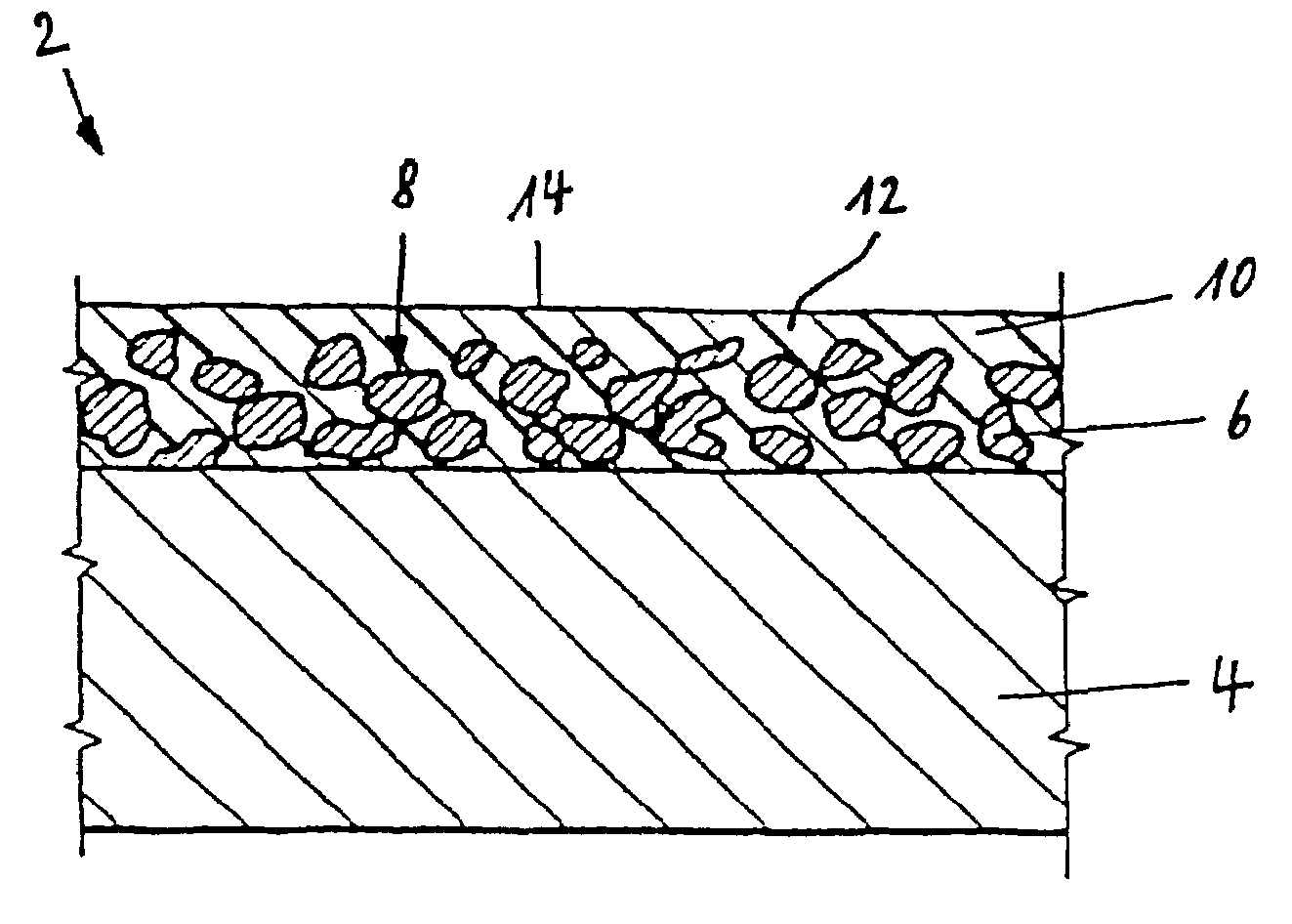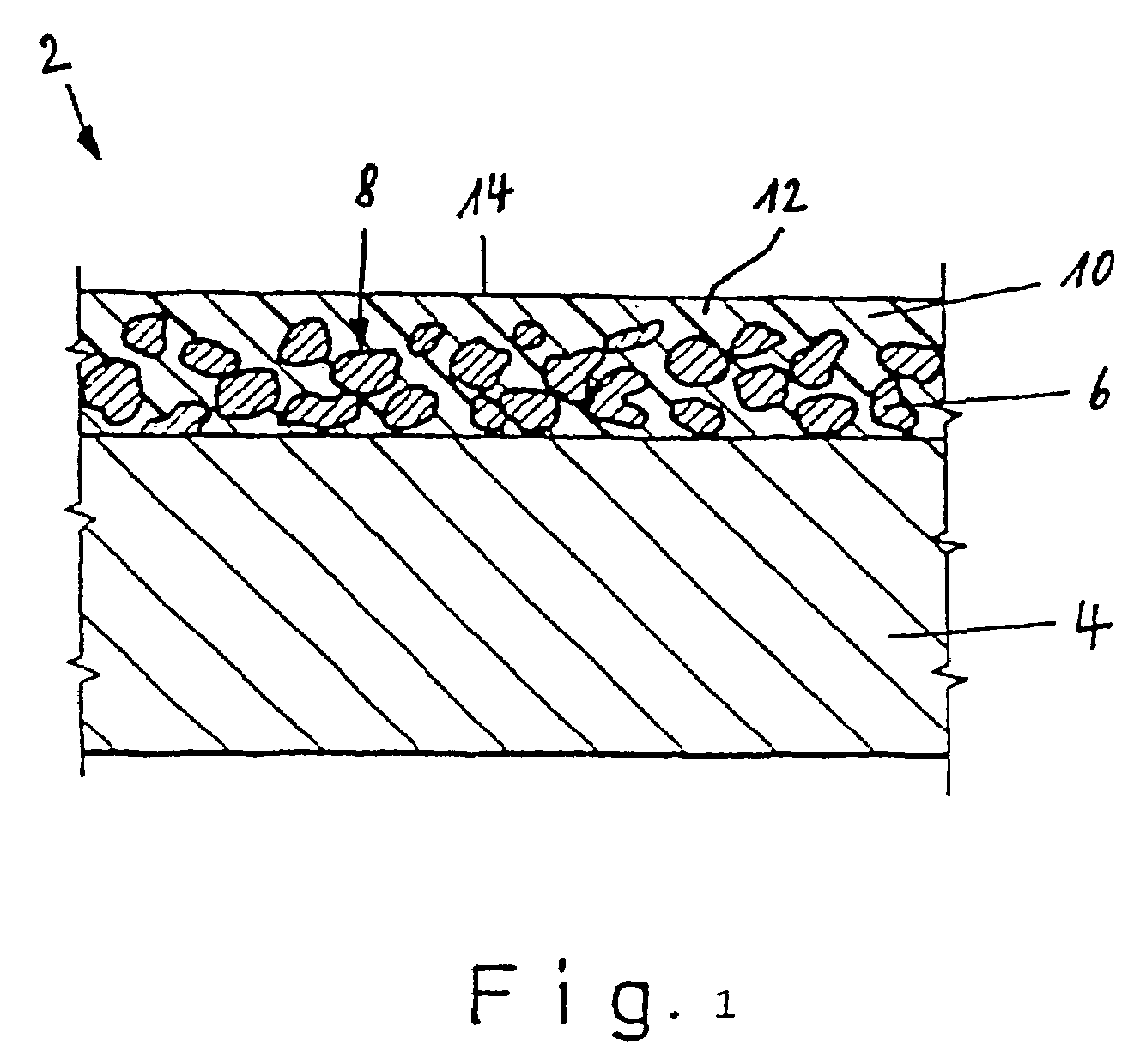Friction bearing composite material with a metal base layer
a composite material and metal base layer technology, applied in the direction of bearings, rolling resistance optimization, layered products, etc., can solve the problems of fibers not being easily held or anchored in the sliding layer material, unsatisfactory wear resistance, potential fatigue spots, etc., to improve the bonding effect of carbon fibers in the ptfe base material
- Summary
- Abstract
- Description
- Claims
- Application Information
AI Technical Summary
Benefits of technology
Problems solved by technology
Method used
Image
Examples
Embodiment Construction
[0025]The sliding bearing composite material, generally referred to with reference numeral 2 in the figure, comprises a metallic support layer 4 of steel and a porous carrier layer 6 disposed thereon, preferably of a lead-free bronze layer, e.g. with 90 percent by weight of copper and 10 percent by weight of tin. A sliding layer material 10 is introduced into the pores of the carrier layer 6 on the upper side 8 of the carrier layer 6 opposite to the support layer 4. The sliding layer material 10 projects slightly past the upper side 8 of the carrier layer 6 and forms a sliding layer 12 with a sliding surface 14 for a sliding partner (not shown). The sliding layer material 10 has a PTFE matrix with at least 60 percent by volume of PTFE and 10 to 25 percent by volume of zinc sulfide and, in accordance with the invention, 1.5 to 3.5 percent by volume of carbon fibers and 1 to 7 percent by volume of PFA.
[0026]A preferred composition of the sliding layer material comprises 65 to 85 perce...
PUM
| Property | Measurement | Unit |
|---|---|---|
| grain size | aaaaa | aaaaa |
| grain size | aaaaa | aaaaa |
| thickness | aaaaa | aaaaa |
Abstract
Description
Claims
Application Information
 Login to View More
Login to View More - R&D
- Intellectual Property
- Life Sciences
- Materials
- Tech Scout
- Unparalleled Data Quality
- Higher Quality Content
- 60% Fewer Hallucinations
Browse by: Latest US Patents, China's latest patents, Technical Efficacy Thesaurus, Application Domain, Technology Topic, Popular Technical Reports.
© 2025 PatSnap. All rights reserved.Legal|Privacy policy|Modern Slavery Act Transparency Statement|Sitemap|About US| Contact US: help@patsnap.com


